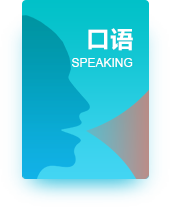今日份雅思阅读每日一练内容来自《经济学人》,文章标题是:Brains and computers,We can remember it for you wholesale,Elon Musk enters the world of brain-computer interfaces(人脑与计算机,我们能为你保存大把的记忆),本篇雅思阅读文章建议精读时间:35分钟,阅读难度偏难,附雅思阅读高频词汇。

Brains and computers,We can remember it for you wholesale,Elon Musk enters the world of brain-computer interfaces伊隆·马斯克步入脑机连接的世界
EVER since ENIAC, the first computer that could be operated by a single person, began flashing its ring counters in 1946, human beings and calculating machines have been on a steady march towards tighter integration. Computers entered homes in the 1980s, then migrated onto laps, into pockets and around wrists. In the laboratory, computation has found its way onto molars and into eyeballs. The logical conclusion of all this is that computers will, one day, enter the brain.
1946年,第一台可由单人操作的计算机埃尼阿克(ENIAC)开始展示自己的环形计数器。自那时起,人类和“计算的机器”便一直向更紧密的结合稳步前进着。计算机在上世纪80年代走入千家万户,之后又移步至人们的膝上、口袋里以及腕间。在实验室里,计算在臼齿上及眼球中派上了用场。由此得出的一个合理结论便是:总有一天,计算机会进入人类的大脑。
This, at least, is the bet behind a company called Neuralink, just started by Elon Musk, a serial technological entrepreneur. Information about Neuralink is sparse, but trademark filings state that it will make invasive devices for treating or diagnosing neurological ailments. Mr Musk clearly has bigger plans, though. He has often tweeted cryptic messages referring to “neural lace”, a science-fictional concept invented by Iain M. Banks, a novelist, that is, in essence, a machine interface woven into the brain.
起码一家名叫Neuralink的公司押下了这一赌注。这家公司刚由开创了一系列科技业务的企业家伊隆·马斯克(Elon Musk)设立。关于该公司的信息寥寥,但其商标申请文件称公司将打造用于治疗及诊断神经系统疾病的侵入性装置。不过,马斯克无疑还有更宏伟的计划。他经常在推特上发些令人捉摸不透、谈及“神经织网”(neural lace)的消息。这一科幻概念是由小说家伊恩·M·班克斯(Iain M. Banks)所构想,从本质上说,就是将机器界面植入人脑。
Although devices that can read and write data to and from the brain as easily as they would to and from a computer remain firmly in the realm of imagination, that has not stopped neuroscientists (and, of course, Mr Musk) from indulging in some speculation. Theodore Berger of the University of Southern California, in Los Angeles, has proposed that brain implants might be used to store and retrieve memories. Dr Berger’s prosthesis would be intended to help those whose brains cannot form long-term memories because they are damaged. But if the idea worked, there seems little reason why those without damage should not and would not want something similar. Mr Musk himself, more ambitiously still, imagines an implant that would let the wearer tap directly into the internet, and all of the computational power available there.
虽然能够自如地在人脑内读写数据(就像在计算机上读写数据那样)的设备仍然只停留在想象的世界中,但神经科学家们(当然,还有马斯克)并没有就此停止去探究某些猜测。洛杉矶南加州大学的西奥多·伯格(Theodore Berger)提出,人脑植入物也许可用来存储和提取记忆。伯格所说的这种大脑假体将被用于帮助那些脑部因受损而无法形成长期记忆的人。不过,如果这一想法奏效,那些大脑并没受损的人似乎也并没什么理由不应该要、也没理由不想要和这种假体类似的东西。马斯克本人的想象更为大胆。他觉得可以有这样一种植入物,让植入者直接就能使用互联网,以及互联网提供的所有计算能力。
Of minds and melding 人脑与融合
Behind this suggestion lies Mr Musk’s argument, made repeatedly, that human beings need to embrace brain implants to stay relevant in a world which, he believes, will soon be dominated by artificial intelligence. Proposing the artificial augmentation of human intelligence as a response to a boom in artificial intelligence may seem a bit much. But Mr Musk’s new company is not alone. A firm called Kernel is following a similar path.
马斯克反复提及、用以支撑这一想法的论据是:他认为人工智能很快将主导这个世界,人类需要欣然接纳脑植入物才不至于变得无足轻重。利用人为手段来增强人类智能,以此来应对人工智能的蓬勃发展,这似乎有点过火。不过马斯克的新公司并不是独一份。一家名叫Kernel的公司也走上了类似的道路。
To start with, Kernel’s engineers hope to build devices for the treatment of neurological conditions such as strokes and Alzheimer’s disease. Ultimately, however, they want to create cognition-enhancing implants that anyone might care to buy. Kernel was founded in October 2016 by Bryan Johnson, an entrepreneur who, like Mr Musk, got rich by processing payments online (PayPal, which Mr Musk helped found, bought Braintree, Mr Johnson’s company, in 2013). Mr Johnson put $100m of his own money into Kernel, stating that “unlocking our brain is the most significant and consequential opportunity in history.”
Kernel的工程师希望首先能打造出用于治疗中风及阿尔茨海默症等神经系统疾病的设备。不过,他们最终想创造的是能够强化认知能力、任何人也许都想买的植入物。Kernel由企业家布莱恩·约翰逊(Bryan Johnson)于2016年10月创立。和马斯克一样,他也是因提供在线支付的处理服务而致富(马斯克参与创办的Paypal在2013年收购了约翰逊的公司Braintree)。约翰逊自掏腰包向Kernel投入一亿美元,并称“解开我们大脑的秘密是有史以来最为重要、意义最为重大的一个机会。”
In some ways, Mr Johnson and Mr Musk are merely the new boys in what is quite an old field. The first brain implants, carried out in the 1970s, were prosthetic visual systems, though they did not work well. Cochlear implants, to restore hearing, have done much better. Hundreds of thousands of people now have them—though, strictly speaking, they talk to auditory nerves rather than to the brain directly, which simplifies the task. For some people, the symptoms of Parkinson’s disease can be kept in check by electrodes the diameter of a strand of spaghetti inserted deep into the brain. And one of the latest ideas in the field is to read and interpret brain activity, in order to restore movement to the limbs of the paralysed.
从某些方面来看,约翰逊和马斯克仅仅是新步入一片久经耕耘的领域的毛头小伙。最早的脑植入物是人工视觉系统,于上世纪70年代植入人脑,不过效果并不太好。用于恢复听力的人工耳蜗表现则要好得多。如今已有几十万人植入了人工耳蜗——不过严格说来,它们并不是直接同大脑对话,而是连接听觉神经,这使任务得以简化。在有些人那里,将一根意面粗细的电极植入其大脑深处,便可抑制帕金森氏症的某些症状。该领域最新的想法之一是读取并解读大脑的活动,以使瘫痪之人的四肢恢复活动能力。
In one important way, however, Kernel and Neuralink are different from previous efforts. Though aimed initially at medical applications, they also explicitly nod to the possible non-medical uses of this kind of implant technology. In February Mr Musk said that he thought “meaningful” interfaces between the brain and computation were five years away. The creation of Neuralink suggests that he, like Mr Johnson, is putting his money where his mouth is.
不过,Kernel和Neuralink在一个重要的方面有别于前人的工作。虽然它们最初的计划是将这类植入技术应用于医疗,但也明确表示可能将它们应用于医疗之外的目的。马斯克在2月称,他认为要实现人脑和计算机之间“有意义”的连接需要五年的时间。Neuralink的创立表明他和约翰逊一样,是个会为自己倡导的东西投资的人。
Most neuroscientists would, it must be acknowledged, regard all this as heroically optimistic. In a review of the field, published in January in Nature Reviews Materials, Polina Anikeeva and her colleagues at the Massachusetts Institute of Technology (MIT) wrote that, although Moore’s Law and the miniaturization of electronics have brought devices down to a size where their insertion into the brain can be considered, big challenges lie ahead.
必须得承认,多数神经科学家都会认为这些计划乐观中却也透着逞强。在发表于1月《自然综述:材料》(Nature Reviews Materials)上的一篇对该领域的综述中,麻省理工学院的波琳娜·安尼基娃(Polina Anikeeva)及其同事写道,虽然摩尔定律及电子元件的微型化已使各种装置缩小到可以考虑将之置入大脑的程度,但未来仍存在着重大挑战。
The brain’s complexity, and researchers’ present lack of understanding of how that organ’s component cells work together to do what they do, makes designing interfaces between brain and machine hard. But, even were it simple in principle, the rigid, silicon-based tools of modern computing do not mesh easily with the squishy soft-tissue of biology. Implants often generate scars around themselves. And the surgery needed to put them in place carries risks of its own.
由于人脑的复杂性,以及研究人员目前对组成人脑的细胞协同工作的原理理解得并不充分,要设计人机接口并不容易。不过,就算这在理论上变得简单易行,要让硬质的现代化计算硅片跟生物学中黏湿的软组织相融合也不会很容易。植入物经常会对周围的组织造成创伤,将它们放入相应位置的手术本身也存在风险。
There may, though, be alternative approaches. One such is being tested by a group at Florida International University, in Miami, led by Sakhrat Khizroev. Dr Khizroev and his team use magnetoelectric particles so tiny that they can interact with the electric field generated by an individual nerve cell. The team inject these particles, tens of billions at a time, into a vein in a rat’s tail, then drag them into the animal’s brain using magnets. Each particle produces an electric field when stimulated by an external magnetic field. This may, in principle, permit a researcher to use such a particle to influence the electrical states of nearby nerve cells—and thus, in essence, reprogram them. How that would be done in practice, though, is obscure.
不过,或许还有其他的办法。迈阿密佛罗里达国际大学(Florida International University)的萨克拉特·齐兹洛夫博士(Sakhrat Khizroev)所领导的团队便在测试其中的一种。他们使用的磁电粒子十分微小,能够与单个神经细胞产生的电场相互作用。该团队将数百亿这种粒子一次性注射进小鼠尾部的血管中,然后用磁铁将它们引至小鼠的大脑。每个粒子都会在外部磁场的刺激下产生电场。这在理论上或许可令研究人员利用这种粒子来影响附近神经细胞的电位状态——实质上就是重新编排这些细胞。但这在实践中能如何实现就不得而知了。
Another approach, being pioneered by Jose Carmena of the University of California, Berkeley, and his colleagues, uses devices the size of a grain of rice to convert ultrasonic energy beamed towards them into electricity that can stimulate nerve or muscle cells. Ultrasound travels through the body, so can power and control such devices without wires.
加州大学伯克利分校的何塞·卡梅纳(Jose Carmena)及其同事正在开创另外一种替代办法。他们所使用的装置有一粒米那么大,可将射向它们的超声波能量转化为电能来刺激神经或肌肉细胞。超声波能穿透身体,因而无需电线就可驱动和控制这种装置。
Both Dr Khizroev’s technique and Dr Carmena’s are less invasive than the current standard brain interface, a patch of needlelike electrodes known as a Utah array that is plugged into the brain’s surface. This is far too blunt an instrument to send any but the crudest signals into a brain. But, regardless of the precise approach taken to hardware, another problem the field faces is that no one understands the mechanism behind the natural equivalent of software—the way the brain encodes information. Such interfaces as do exist have to be trained, rather than instructed what to do. Instruction would be possible only if brain signals were properly understood.
齐兹洛夫和卡梅纳所采用技术的创伤都小于目前常见的那种脑界面,即一个布满针状电极的小块,名为犹他电极阵列(Utah array),使用时插入大脑表层。它只能向大脑发送最粗糙的信号,远不是一个有效的方法。不过,不管硬件采取的是何种方法,该领域都还面临着另外一个问题:没有人了解软件的天然对等物的工作机制,即大脑是如何进行信息编码的。现有的这种接口只能接受训练,而不能遵循指令行事。只有在大脑信号能被正确理解的情况下才能有效地发布指令。
It is not yet clear which technological routes Mr Musk’s and Mr Johnson’s commercial efforts will take, though Kernel recently bought Kendall Research Systems, a spin-off from MIT that builds devices which use light, rather than electricity, to stimulate the brain. But the two firms’ shared underlying premise—that medical purposes might lead to more consumer-orientated applications—does seem a sensible way to do things.
目前尚不清楚马斯克和约翰逊的商业运作会采用何种技术路线,不过Kernel最近收购了从麻省理工学院剥离出来的Kendall Research Systems。该公司制造的装置利用光而不是电来刺激大脑。但这两家公司共同的假设——医疗上的用途也许会指向以消费者为导向的应用——似乎确实是一个明智的行事方法。
It is not yet clear which technological routes Mr Musk’s and Mr Johnson’s commercial efforts will take, though Kernel recently bought Kendall Research Systems, a spin-off from MIT that builds devices which use light, rather than electricity, to stimulate the brain. But the two firms’ shared underlying premise—that medical purposes might lead to more consumer-orientated applications—does seem a sensible way to do things.
人们明白医疗手术会有风险。不过只要态度真诚,人们或许会容忍在非医疗目的的情况下对人体进行实验,而这种实验通常在非医疗目的的情况下是不被允许的。这样的话,Neuralink、Kernel以及随后出现的公司就能增强自身的专门技能,在将来也许可将这些技能转化成更为广泛的应用。
As for Mr Musk himself, Neuralink brings to five the number of ambitious technology companies in which he is involved. The others are Tesla (electric cars, batteries and solar power), which in late March attracted an investment from Tencent, a Chinese tech giant; SpaceX (rocketry); the Boring Company (tunnelling); and Hyperloop (vacuum trains). It is hard to discern the connections between these ideas. But, in Mr Musk’s mind, they are presumably already laced together.
对马斯克本人而言,有了Neuralink,与他有关的雄心勃勃的科技公司数量就变成了五个。其他四个分别是:生产电动汽车、电池及太阳能的特斯拉,3月底刚吸引了中国科技巨头腾讯的投资;从事火箭研究的SpaceX;专事挖掘隧道的Boring Company;采用悬浮真空列车的超回路列车(Hyperloop)。要识别这些创意之间的关联很难,不过,在马斯克的脑袋里,它们想必已经交织在一起了。
雅思阅读高频词汇
speculation 投机
silicon-based 硅基
prosthetic 假体
paralyse 瘫痪
neuroscientists 神经系统科学家
neurological 神经系统
nerve cells 神经细胞
laboratory 实验室
interface 接口
integration 集成
implant 植入物
entrepreneur 企业家
diameter 直径
consequential 重要的
cognition-enhancing 认知增强
calculating 计算
跟着小站雅思频道,坚持雅思阅读每日一练,雅思阅读高分你也可以。
相关资料
相关推荐
-
雅思阅读想要提升2分 应该怎么做
2024-01-25![雅思阅读想要提升2分 应该怎么做]()
-
雅思阅读速记怎么做
2023-10-27![雅思阅读速记怎么做]()
-
10分钟刷一篇真题,利用好碎片时间也能提分
APP专享![10分钟刷一篇真题,利用好碎片时间也能提分]()
-
怎样做雅思阅读精读
2023-11-15![怎样做雅思阅读精读]()
-
雅思阅读要怎么提升
2023-10-26![雅思阅读要怎么提升]()
-
雅思阅读小白如何学起
2023-11-22![雅思阅读小白如何学起]()
-
雅思阅读拼分技巧
2023-11-16![雅思阅读拼分技巧]()
-
雅思阅读答题技巧有哪些
2023-11-01![雅思阅读答题技巧有哪些]()
-
雅思阅读常考的词汇有哪些
2023-10-20![雅思阅读常考的词汇有哪些]()
-
雅思阅读的方法有哪些
2023-11-16![雅思阅读的方法有哪些]()
-
雅思阅读平时如何练好
2023-08-17![雅思阅读平时如何练好]()
-
雅思阅读配对题技巧总结
2023-11-08![雅思阅读配对题技巧总结]()
-
雅思阅读科技发明类文章 有什么高分技巧
2023-12-01![雅思阅读科技发明类文章 有什么高分技巧]()
-
雅思阅读高分技巧汇总
2023-11-16![雅思阅读高分技巧汇总]()
-
如何背诵雅思阅读单词 有什么技巧
2024-01-15![如何背诵雅思阅读单词 有什么技巧]()
-
雅思阅读提升办法有哪些
2023-12-04![雅思阅读提升办法有哪些]()
-
雅思阅读怎么点拨文章
2023-11-14![雅思阅读怎么点拨文章]()
-
雅思阅读想要提升 要看什么外刊
2023-11-02![雅思阅读想要提升 要看什么外刊]()
-
雅思阅读什么外刊比较好
2023-12-01![雅思阅读什么外刊比较好]()
-
雅思阅读自己备考如何提升
2023-11-28![雅思阅读自己备考如何提升]()
-
雅思阅读基础很差怎么练习
2023-10-27![雅思阅读基础很差怎么练习]()




















